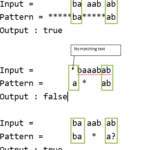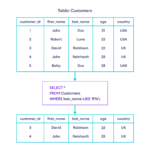There are many things that we study. Many of those don’t have real-life applications, or we don’t observe them easily around us, but one such concept that we almost find everyday, is of shapes and lines. There are many different types of lines that are present all around us. The concept of lines is easy to grasp. Lines are categorized into various types depending on the inclination they make with horizontal lines and many other factors. Two major types of lines are: horizontal line and vertical line. Let us discuss lines and a few of the properties of lines in detail.
Straight lines
We all know that a minimum of two points are always required to form a line. The maximum number of points cannot be counted; a line can consist of many points. Straight lines are observed all around us. The scale we use for measurement is always in the form of a straight line. Edges of most of the shapes like square and rectangle are also straight lines only. Straight lines can be inclined to various angles. A straight line having a zero-degree angle is always parallel to the x-axis and is known as a horizontal line. Similarly, a vertical line is one having an angle with the base as ninety degrees. There are many different ways of representing a straight line, depending on the information we are provided. Let us look at a few of the equations used to represent straight lines.
The general equation of a straight line is the equation we normally deal with. It is of the form ax+ by+ c = o and is known as the general equation of a straight line. In the equation, a, b, and c are constants, whereas x and y are the variables. One crucial point to keep a note of while dealing with a straight line is the slope of the line. In the above-mentioned equation, the slope of the line is given by -a/b or we can say the slope of the line is equal to the ratio of negative coefficient of x to that of coefficient of y. This was one form of the equation. Similarly, a line can be represented in many other forms such as the line and y-intercept form. In this form, the line is represented by the equation y = mx+b, here m gives us the slope of the line. This equation is used when the slope of the line and y-intercept are known to us.
Vertical lines
Lines that stand straight or have an angle accurately equal to ninety degrees with the horizontal plane or line, such type of line is called vertical lines. One point that tells us whether a line is vertical or not is that vertical lines are always parallel to the y axis and never intersect the y axis. One of the most common ways of representing a vertical line is x = a. Where a is any constant when this equation is plotted on the graph it comes out to be a straight line parallel to the y axis. Thus, it represents a vertical line.
In the above article, we have tried to discuss most of the concepts related to a straight line. Different lines have unique properties, and it is important to have knowledge regarding all the lines. There are many equations of lines that are used to represent them. If a student faces any difficulty in grasping such concepts related to the subject of mathematics, then they should look for an online platform for help. Cuemath is one of the best online platforms that provide quality education to every individual. Every student should take guidance from them to perform well in academics and for a brighter future.











